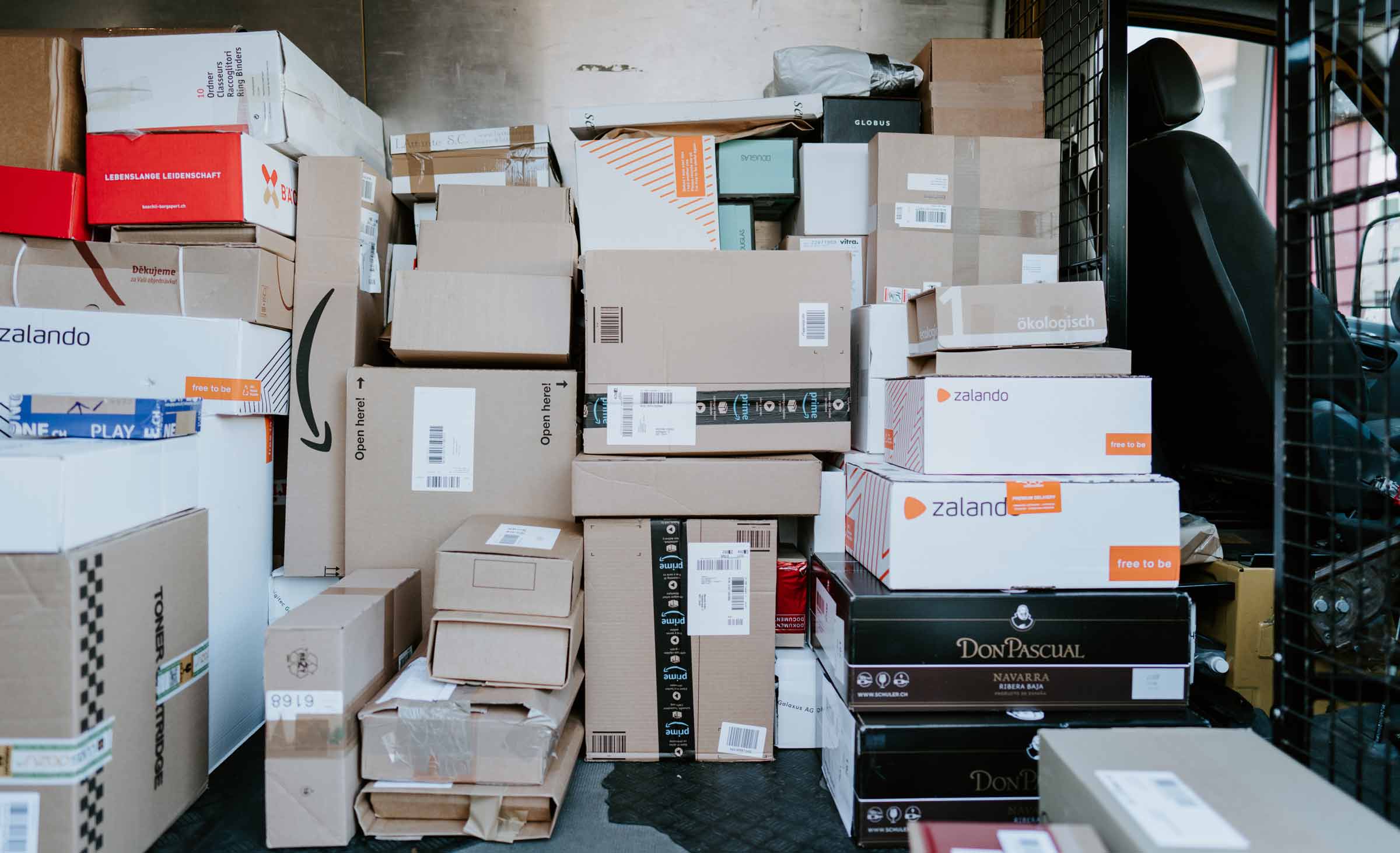Want to Increase Payload Capacity? You Might Be Asking the Wrong Question

You’re searching for ways to increase payload capacity. The problem is: you can’t. At least not effectively.
But there is a way to increase your efficiency and get more done in less time—optimize your routes.
Jump to the section that most interests you:
- What Is Payload Capacity?
- Is It Possible to Increase Payload Capacity?
- Increase Overall Delivery Capacity With Route Optimization
What Is Payload Capacity?
“Payload capacity” refers to how much cargo (boxes, packages, products, etc.) you can load onto a truck—or any other vehicle—safely for transportation and delivery. Typically, you can find this number in the owner’s manual of your truck.
But how does the manufacturer determine what the payload capacity is? With a relatively simple math problem. To understand the math, you’ll need to know two transportation vocabulary terms: gross vehicle weight rating (GVWR) and curb weight.
Gross vehicle weight rating is the “maximum amount of weight a vehicle can hold,” according to Kelly Blue Book. The GVWR accounts for factors specific to the truck (like the suspension system, frame, and wheels) to determine exactly how many pounds the truck can support.
Curb weight refers to how much the truck itself weighs. This includes things like the seats and rearview mirrors and everything else the truck needs to function, from the gas to the wiper fluid. Curb weight also includes the passenger weight of anyone who rides in the vehicle.
Subtract your truck’s curb weight from its total weight (GVWR), and you’ll know how much additional weight the truck can support. That is payload capacity.
Is It Possible to Increase Payload Capacity?
There are some aftermarket modifications you could make to your trucks to increase their payload capacity. The problem is those modifications won’t likely lead to any meaningful change to overall carrying capacity. Most of the changes you could make will only increase payload capacity by a marginal amount, and they may not even be an option depending on what vehicles you use or what industry you operate in.
Optimize your packaging. One option available to everyone is to optimize your packaging processes—you could fit more goods into boxes and put more boxes on trucks. The problem is that while you may be able to fit more cargo onto the truck, you won’t have increased the vehicle’s payload capacity. In fact, exceeding your truck’s payload capacity is not only unsafe but can lead to severe and expensive maintenance problems.
Cut weight from your truck. Another option would be to take and begin removing additional seats or doors, much like the trucks FedEx and UPS utilize. This may allow your truck to hold another box or two, but it won’t provide a significant increase in payload capacity. You’ll only be able to add as much weight as you can remove from the truck. Even if you make these modifications, you might still be restricted by laws or industry regulations that force you to rely on the payload rating and capacity (which is set by truck manufacturers) of the vehicle or the license of the delivery driver.
Add a tow. So, loading more onto the truck is off-limits. But what about towing a trailer? Or even getting a bigger trailer than what you already have? The problem here is a combination of payload capacity and towing capacity. Adding a trailer won’t increase your payload capacity. If your truck is already carrying as much cargo as possible, its towing capabilities will be hampered by the extra weight. Long term, overloading your vehicle—whether by exceeding payload capacity or towing more than your truck is able—can shorten the life of your vehicle and lead to pricey mechanic bills a warranty may not cover.
Increase Overall Delivery Capacity With Route Optimization
Unfortunately, increasing payload is unlikely to lead to any meaningful improvements to your transportation and delivery processes. But hope is not lost. There is another way. Route optimization allows you to efficiently deliver more items. So, what is route optimization? Route Optimization involves assessing routes to determine what the most efficient one will be.
Route optimization helps you streamline deliveries, saving you time and money. However, when done manually, route optimization is difficult and time-consuming. While it may be possible for very small businesses, even the smallest organizations can have complicated orders that prevent manual route optimization. And, as businesses grow, orders increase and become more complicated, and manual route optimization becomes impractical. Fortunately, route optimization can be fully automated with a tool like OptimoRoute.

Plan the most efficient routes automatically
There are a lot of different factors to consider when planning routes—how many vehicles you have, your driver’s schedules, and how many orders you need to fill. That’s a lot to consider when optimizing routes manually. And those are only the basic factors to consider. OptimoRoute eases this burden by doing all the heavy lifting for you. Some of the factors OptimoRoute can assess for you include:
- Order details, which planners can easily import as a CSV file
- Historical data, which provides information on how long it takes to fulfill an order
- Driver information, including their licensing, vehicle capacity, skillset, and more
Armed with this information, OptimoRoute automatically generates the most efficient routes. By looking at details for all orders, OptimoRoute gauges how long it will take to complete a delivery. For example, if a driver is scheduled to make a delivery that will take 30 minutes more than standard to complete, their route might be balanced with two deliveries that take 15 minutes less than normal to finish.
OptimoRoute also assesses driver qualifications, ensuring complicated deliveries are assigned to drivers with the appropriate skills and licenses. This information can ensure drivers are allocated an appropriate number of deliveries without overburdening them. This also means newly hired drivers won’t accidentally be given a complicated delivery they haven’t been trained for.
Factor vehicle capacity into route planning
When it comes to route optimization, there’s far more to consider than just what drivers are available and which deliveries they’re qualified to fulfill. You also need to consider the payload capacity of each vehicle. By entering this information into the system, OptimoRoute can leverage load planning to allocate cargo to vehicles in the most efficient way possible.
This means vehicles are filled with as many boxes and packages as possible without exceeding the vehicle’s load capacity. For example, if one package creates an unusually heavy load, OptimoRoute will allocate smaller and lighter packages to the same vehicle to maximize what goes out for delivery without exceeding the vehicle’s capacity.
Plan driver schedules weeks in advance
Simply knowing what orders need to be filled and which trucks the packages can fit on isn’t enough. You also need to know when the deliveries should arrive at their final destination. OptimoRoute helps with this by generating schedules as many as five weeks into the future. This provides plenty of time to make adjustments, like finding coverage if a driver will be away on vacation.
Route Optimization: Better for Your Bottom Line
Increasing payload capacity may seem like an easy fix to increase delivery capacity. Unfortunately, with few benefits and potentially significant costs, it’s just not feasible. Automated route optimization, on the other hand, can solve your payload capacity problem.
Automating route optimization increases the number of deliveries you can complete. And you don’t have to worry about increasing your max payload to do it. The cargo will be efficiently placed on trucks and the routes planned weeks in advance. Automated route optimization utilizes the things you already have. This means you can use whatever vehicles you already have in your fleet.
To see for yourself just how OptimoRoute can help increase your transportation and delivery capacity, you can test our software free for 30 days with no obligation.
Try OptimoRoute™ for Free
No installation or credit card required


